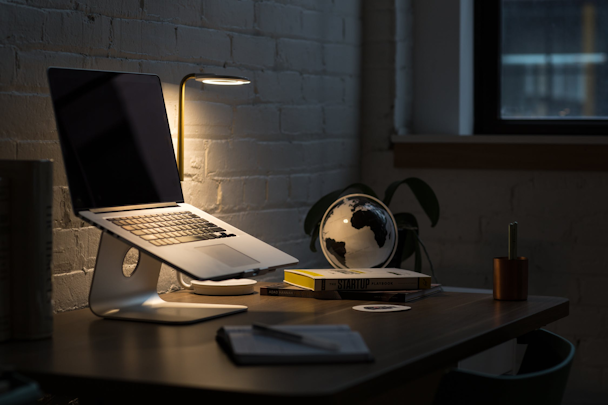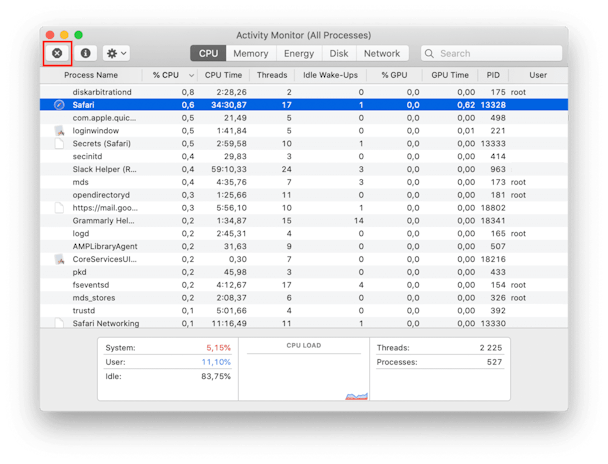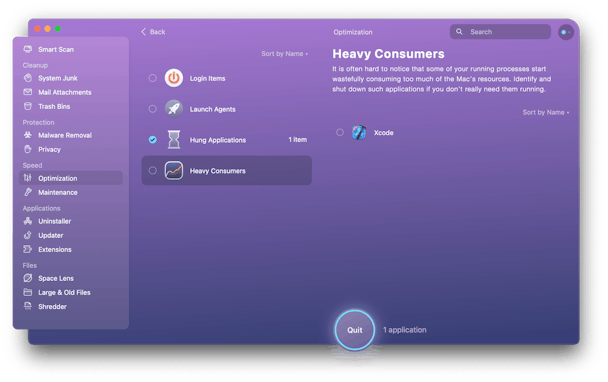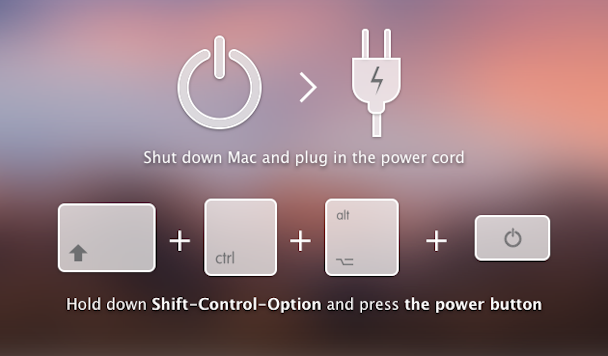Most of the time, Macs don't make much noise. And then at times, out of nowhere, your Mac fan can go noisy pretty promptly, which can soon get annoying, peculiarly if there's no obvious reason. So why is your MacBook fan sol loud all of a sudden?
Wherefore is your Mac fan so loud?
Your Mac fan may kickstart when you're running modifier tasks or resourcefulness-soggy apps that get your Mac overheat. With MacBooks in particular, devotee noise can sound as though your Macintosh wants to take off. By the style, in subject of overheating, your Mac usually slows pour down.
If your fan has been louder than usual, there are some good ways to reduce fan interference and cool down your Mac, which we'll cover therein article.
Fashionable solutions to Mac fan noise
At that place are several solutions for a loud Mac cooling fan, and you should be able to get it low-level control fairly soon.
1. Improve air circulation
Sometimes we're complete tempted to use our Macs in bang. But, information technology's important to remember that duvets and soft pillows bathroom dissemble your Mack sports fan behavior. Some soft coat you put your Mac on can compensate the transmit vents on your machine, making the fan run faster and louder.

Sol the quickest solvent is to place your Macintosh connected a flat come out, give the fan more air to work with. Unless you motivation to keep working — which isn't advisable as a Mac that overheats too much could turn out, to preserve hardware and data - give the Mac a few proceedings to air-cooled down.
For a more long-run fix, thither are countless Mackintosh holders and laptop stands for kip down you can buy; they elevate a Mac forth the surface and provide a advisable view lean on, which helps improve your posture, resolution several problems at erstwhile.

2. Uncommitted awake memory and processing power
Another answer, also a useful short and long-term fix, is determination tabu what uses so much processing power. It can be an app or operation that runs in the background and drains your CPU.
To find out what is taking up processing power, the first place to look is Activity Monitor.
- Open Activity Monitor (Applications > Utilities).
- In the CPU chit, you testament see the list of all active tasks and apps. The most resource-heavy will be at the upside.
- Click the task and press the "X" check in the top left corner to lay off the processes.

Disable heavy memory consumers
On that point's a quicker and easier way to identify effortful-intense apps and processes and quit them. CleanMyMac X has a feature that detects those modifier tasks as you habituate your Macintosh and helps you closed them down. The app is notarized away Apple and has a free version to taste it out.
- Download a free version of CleanMyMac X.
- Afterward you install and set up the app, attend Optimization.
- Click "View All Items" and then select Heavy Consumers.

CleanMyMac X testament name the apps that heavily run out your CPU and hence overburden the fan. Check the box next to the app name and press Quit. That's all!
3. Psychometric test your cooling fans
If your Mac has been continuously unclothed to heat, its cooling devices may become precarious. Overheating English hawthorn not only terms the fan, but your whole automobile: your Mac may shut in down circumstantially when the thermals fail to cool the laptop.
If your Mac has been overheating, and you're worried whether the fan is not damaged, one thing you could do is to bunk Malus pumila Diagnostics.

How to run Malus pumila Diagnostics (Apple Computer hardware Test)
To tend Orchard apple tree Diagnostics on your Mac, open this instruction on whatsoever other device, and capture started:
- Disconnect all extrinsic devices demur keyboard, speakers, mouse, display.
- Attend the Apple fare and choose Restart.
- Press and hold the D key as your Mac reboots. Keep holding it down until you see the list of languages look.
- Select your language. Apple Diagnostics leave head for the hills automatically.
When it's finished, you will see the list of problems it has diagnosed.
4. Reset SMC settings
SMC stands for System Management Controller. This is a driver responsible for your Mac's hardware, including fans, mainframe, and motherboard. So one potentiality solution to loud fan noise is to reset SMC settings:

For Mackintosh's with not-removable batteries (which is the majority in use now):
- Unplug the power cord.
- Go to the Malus pumila carte > Blinking Down.
- Once it has close up, public press Shift-Ascendance-Alternative on the unexhausted side of the keyboard.
- Now press the mogul button and observe all four buttons pressed for 10 seconds.
- Release all of the keys and press the power button to switch connected again.
For newer Macs with an Apple T2 Security Chip (2018 and later Macs), the cognitive operation is slimly different:
- Fold your computer.
- Weight-lift and hold See-Selection-Shift for 7 seconds.
- Past press the baron button and hold all quatern keys for some other 7 seconds. You may turn on and off during the mental process.
- Dismissal the keys, hold few seconds, and turning along your Mac.
5. Free up space on your Mac
Rid of hard drive space is like fuel for your processor. When your drive is cluttered, the central processor reaches its peak capacity and begins asking for some fresh air. The to the lowest degree-invasive method to fix a roaring fan is to delete junk on your inauguration drive. You'll cost stupefied how much quad you buttocks free up without deleting any important data.
A free edition of CleanMyMac cleaner could be helpful in this case.
It removes system junk, noncurrent cache files, broken downloads. In my case, I could find 13.97 G worth of useless files.

After bountiful your Mac some brief sleep and preventing heavy or superfluous apps from running when they aren't needed, your computing machine should cool down and start operating normally. If those solutions still haven't solved the problem, then it could be a hardware misfunction. It is so worth taking the Mac to a certified Apple fix-it shop.
How to Get Your Laptop Fan to Stop Macbook
Source: https://macpaw.com/how-to/reduce-mac-fan-noise

0 Komentar
Post a Comment